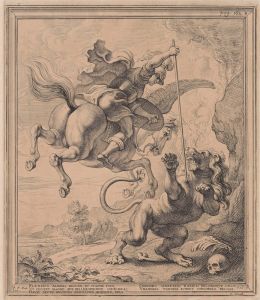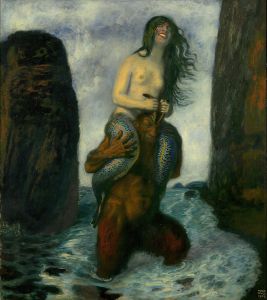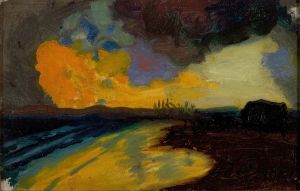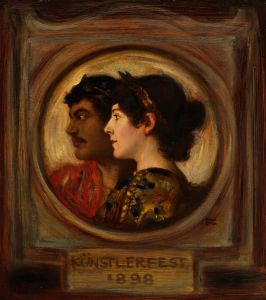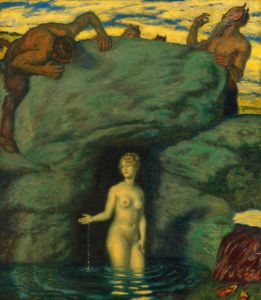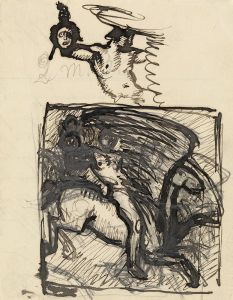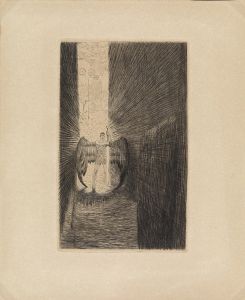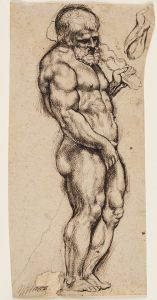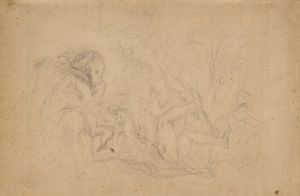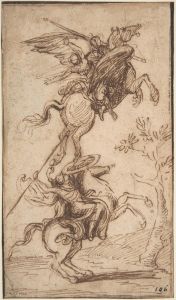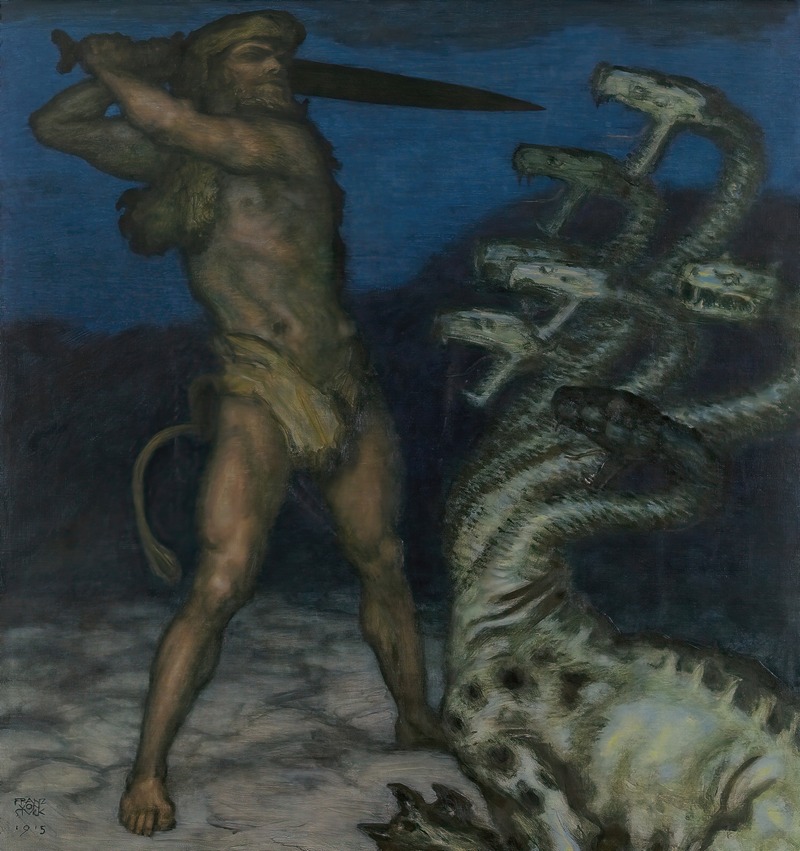
Herkules und die Hydra
A hand-painted replica of Franz von Stuck’s masterpiece Herkules und die Hydra, meticulously crafted by professional artists to capture the true essence of the original. Each piece is created with museum-quality canvas and rare mineral pigments, carefully painted by experienced artists with delicate brushstrokes and rich, layered colors to perfectly recreate the texture of the original artwork. Unlike machine-printed reproductions, this hand-painted version brings the painting to life, infused with the artist’s emotions and skill in every stroke. Whether for personal collection or home decoration, it instantly elevates the artistic atmosphere of any space.
Franz von Stuck's painting "Herkules und die Hydra" is a notable work by the German symbolist artist, created in 1892. Stuck, who was a prominent figure in the Munich Secession movement, often explored mythological and allegorical themes in his art, and this painting is a quintessential example of his fascination with classical mythology.
The painting depicts the legendary Greek hero Hercules, known for his strength and bravery, in the midst of his second labor: the slaying of the Lernaean Hydra. According to Greek mythology, the Hydra was a serpentine water monster with multiple heads, and for each head that was cut off, it would regrow two more. This made the creature a formidable opponent, symbolizing a seemingly insurmountable challenge. Hercules, however, was able to defeat the Hydra with the help of his nephew Iolaus, who cauterized the neck stumps after Hercules decapitated each head, preventing them from regenerating.
Stuck's interpretation of this mythological scene is both dramatic and intense. The composition is dynamic, capturing the struggle between Hercules and the monstrous Hydra. Stuck employs a dark and moody palette, which enhances the tension and drama of the scene. The use of chiaroscuro, a technique that contrasts light and dark, is evident in the painting, highlighting the muscular form of Hercules and the sinuous bodies of the Hydra's heads. This technique not only emphasizes the physicality of the struggle but also adds a sense of depth and movement to the composition.
Franz von Stuck was known for his ability to convey emotion and psychological depth through his art, and "Herkules und die Hydra" is no exception. The painting reflects the artist's interest in the human condition, the battle between good and evil, and the triumph of heroism over adversity. Stuck's work often contained symbolic elements, and this painting can be seen as an exploration of the eternal struggle against overwhelming odds, a theme that resonates beyond its mythological roots.
Stuck's contribution to the art world extends beyond his paintings. He was also an influential teacher at the Academy of Fine Arts in Munich, where he mentored several future artists, including the renowned painter Wassily Kandinsky. His impact on the art community of his time was significant, and his works continue to be studied and appreciated for their technical skill and symbolic depth.
"Herkules und die Hydra" is housed in the Städtische Galerie im Lenbachhaus in Munich, Germany. The Lenbachhaus is known for its extensive collection of works from the Munich Secession and the Blue Rider group, making it a fitting home for Stuck's masterpiece. The painting remains an important example of late 19th-century symbolist art and continues to captivate audiences with its powerful depiction of mythological heroism.
In summary, Franz von Stuck's "Herkules und die Hydra" is a masterful representation of a classic mythological tale, rendered with dramatic intensity and symbolic depth. It showcases Stuck's skill as a painter and his ability to convey complex themes through his art, solidifying his place as a key figure in the symbolist movement.





![Musha]taira no tomomori](/imgs/225657/s/tsukioka-yoshitoshi-mushataira-no-tomomori-bb591b96.jpg)
